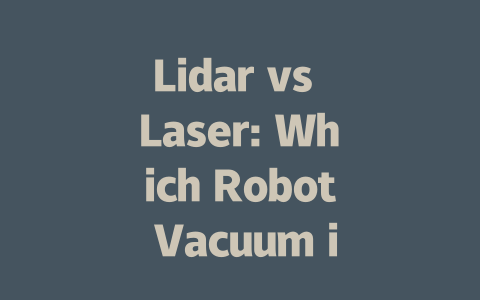
The vacuuming landscape has changed dramatically over the past decade, with the advent of advanced robot vacuums that promise to save time and effort. Among the cutting-edge technologies employed in these devices, lidar and laser are often at the forefront. But what are the differences between these two technologies, and how do they affect the performance of robot vacuums? In this article, we will delve into the features, advantages, and disadvantages of lidar and laser robot vacuums to help you make an informed decision.
Understanding Lidar Technology
Lidar, short for Light Detection and Ranging, is a remote sensing method that uses laser light to scan the environment. A lidar-equipped robot vacuum sends out thousands of light pulses every second and calculates the distance to surrounding objects based on the time it takes for the light to return to the sensor. This technology creates a detailed 3D map of the area, allowing the vacuum to operate intelligently and navigate efficiently.
Advantages of Lidar Robot Vacuums
Disadvantages of Lidar Robot Vacuums
The Role of Laser Technology
On the other hand, laser technology, commonly used in many traditional robot vacuums, typically employs a single laser to measure distances. These robots tend to perform basic scanning and mapping, providing more straightforward navigation capabilities.
Advantages of Laser Robot Vacuums
Disadvantages of Laser Robot Vacuums
Making the Right Choice
When selecting between lidar and laser robot vacuums, consider your specific needs and preferences. If you prioritize advanced technology, more detailed mapping, and performance in low-light conditions, a lidar robot vacuum may be the best option for you. However, if budget is a key concern and you prefer a device that is simpler to operate, a laser robot vacuum could serve you well.
Conclusion
In the battle of lidar vs laser robot vacuums, there isn’t a clear winner; each offers unique advantages and disadvantages. By assessing your cleaning requirements, budget, and the environment in which you’ll be using the vacuum, you can choose the model that best suits your lifestyle. Whether you opt for an advanced lidar vacuum or a more traditional laser model, both can provide a valuable and time-saving solution for maintaining a clean home.










暂无评论内容